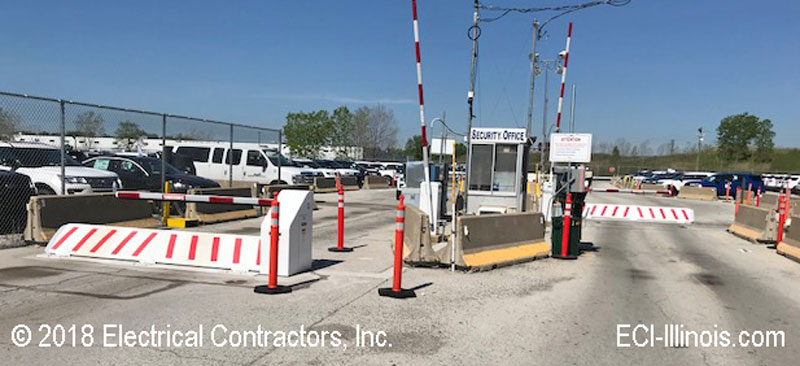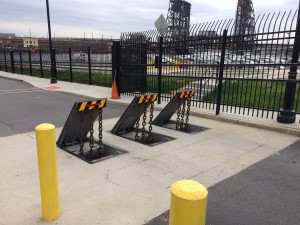The smart Trick of Wedge Barriers That Nobody is Discussing
Excitement About Wedge Barriers
Table of Contents10 Easy Facts About Wedge Barriers DescribedAll About Wedge Barriers

All About Wedge Barriers
The remaining force used to
the cam web cam deploy the wedge plate 16 may might provided offered an electromechanical actuator 84 or other actuator. The springtime assembly 54 and the actuator 84(e. Wedge Barriers. g., electromechanical actuator)may run with each other to convert the cam and lift the wedge plate 16.
As mentioned over, the spring setting up 54 puts in a constant force on the cam, while the electromechanical actuator might be regulated to exert a variable pressure on the webcam, therefore allowing the training and lowering( i. e., deploying and pulling back )of the wedge plate 16. In particular embodiments, the continuous force applied by the springtime setting up 54 might be flexible. g., electromechanical actuator) is handicapped. As will be appreciated, the springtime assembly 54 may be covered and secured from particles or other elements by a cover plate(e. g., cover plate 68 displayed in FIG. 4) that might be significantly flush with the raised surface 38 of the foundation 14. As discussed over, in the released placement, the wedge plate 16 serves to obstruct access or traveling beyond the obstacle 10. The obstacle 10(e. g., the wedge plate 16 )may block pedestrians or vehicles from accessing a residential or commercial property or pathway. As talked about above, the obstacle 10 is affixed to the anchor 30 safeguarded within the structure 14,

front brackets 71. Because of this, the link settings up 72 may pivot and revolve to allow the collapse and extension of the link assemblies 72 during retraction and deployment of the bather 10. The link assemblies 72 cause motion of the wedge plate 16 to be limited. As an example, if an automobile is taking a trip towards the deployed wedge plate 16(e. For example, in one condition, the safety legs 86 may be prolonged throughoutupkeep of the obstacle 10. When the safety and security legs 86 are released, the safety and security legs 86 sustain the weight of the wedge plate 16 versus the surface area 12. Because of this, the lifting this hyperlink system 50 may be shut off, serviced, eliminated, replaced, and so forth. FIG. 5 is partial perspective view of a personification of the surface-mounted wedge-style obstacle 10, highlighting the web cam 80 and the web cam surfaces 82 of the training device 50. Particularly, two webcam surfaces 82, which are described as lower cam surfaces 83, are placed listed below the webcam 80. The reduced web cam surface areas 83 may be taken care of to the surface 12 (e. As an example, the reduced camera surfaces 83 and the installing plate 85 may create a solitary piece that is protected to the support 30 by screws or various other mechanical bolts. Furthermore, two web cam surface areas 82, why not try this out which are referred to as upper cam surface areas 87, are positioned over the camera 80 and paired to (e. In other embodiments, stepping in layers or plates may be placed in between the surface area 12 and the reduced web cam surface areas 83 and/or the wedge plate 16 and the upper cam surfaces 87 As mentioned over, the cam
80 converts along the web cam surfaces 82 when the wedge plate 16 is raised from the pulled back position to the released setting. Furthermore, as mentioned above, the springtime assembly 54 (see FIG. 3 )might offer a pressure acting on the camera 80 in the direction 102 using spring pole try this out 58, which might decrease the pressure the electromechanical actuator 84 is needed to use to the webcam 80 in order to activate and lift the wedge plate 16. 1 )to the deployed placement(see FIG. 4). As shown, the web cam 80 includes track wheels 104(e. g., rollers), which get in touch with and translate along the web cam surfaces 82 throughout operation.